Here are the lead paragraphs from the Employment Situation Summary released this morning by the Bureau of Labor Statistics:
The unemployment rate declined by 0.3 percentage point to 4.7 percent in May, and nonfarm payroll employment changed little (+38,000), the U.S. Bureau of Labor Statistics reported today. Employment increased in health care. Mining continued to lose jobs, and employment in information decreased due to a strike.
Today's report of 38K new nonfarm jobs in May was significantly lower than the Investing.com forecast of 164K. March and April's nonfarm payrolls were revised downward for a combined 59K loss. The unemployment rate was down, now at 4.7%, and its lowest since November of 2007.
Here is a snapshot of the monthly percent change in Nonfarm Employment since 2000.
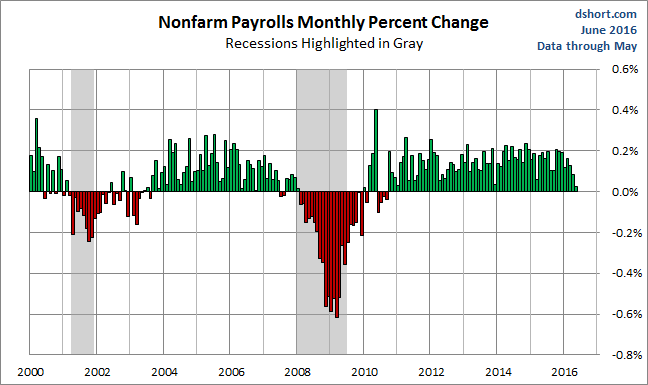
The unemployment peak for the current cycle was 10.0% in October 2009. The chart here shows the pattern of unemployment, recessions and the S&P Composite since 1948.
Unemployment is usually a lagging indicator that moves inversely with equity prices (top series in the chart). Note the increasing peaks in unemployment in 1971, 1975 and 1982. The mirror relationship appears to be repeating itself with the most recent and previous bear markets.
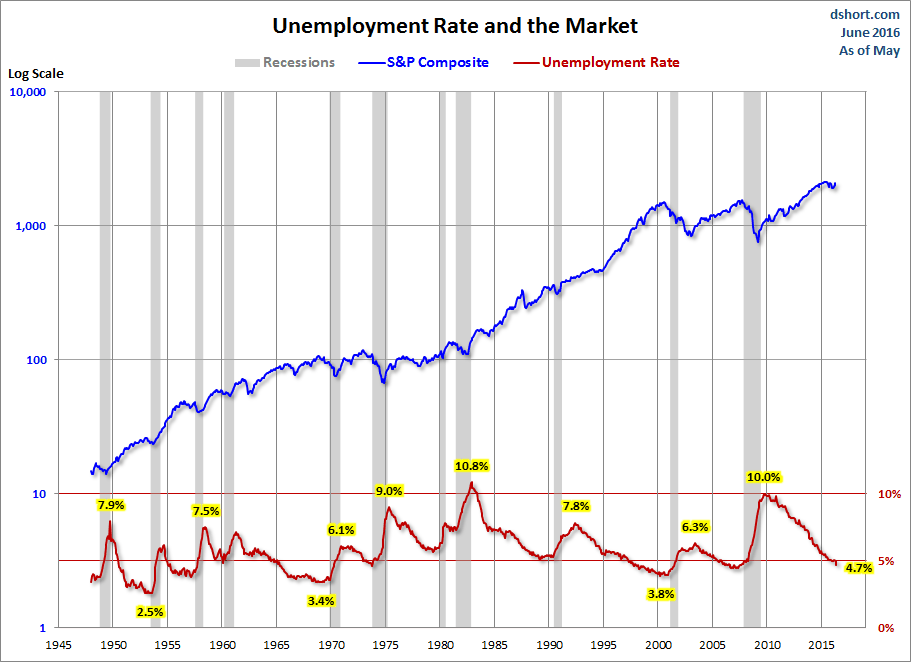
The next chart shows the unemployment rate for the civilian population unemployed 27 weeks and over. This rate has fallen significantly since its 4.4% all-time peak in April 2010. It is now at 1.2%, down 0.1% from the previous month.
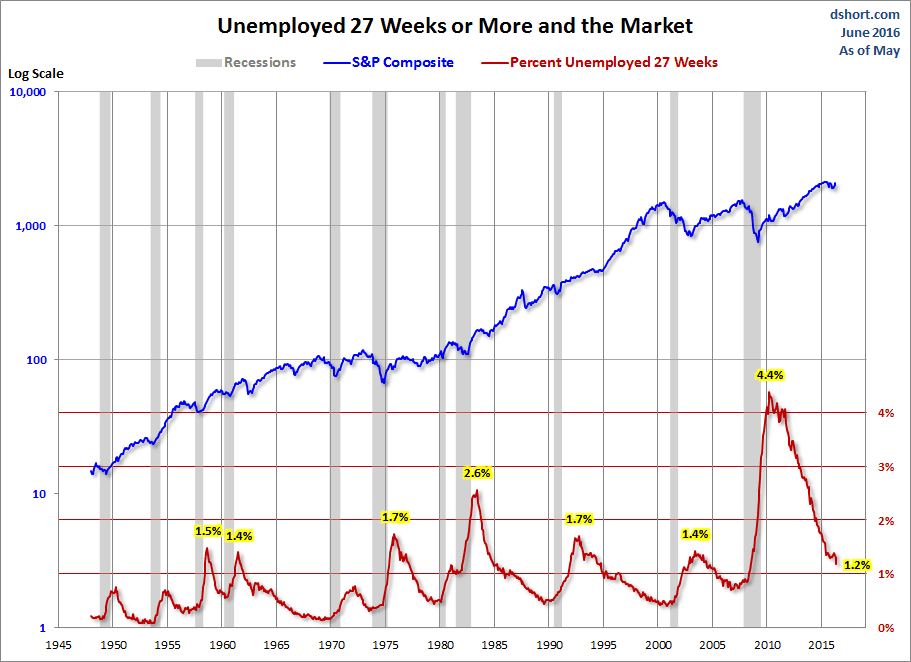
The next chart is an overlay of the unemployment rate and the employment-population ratio. This is the ratio of the number of employed people to the total civilian population age 16 and over.
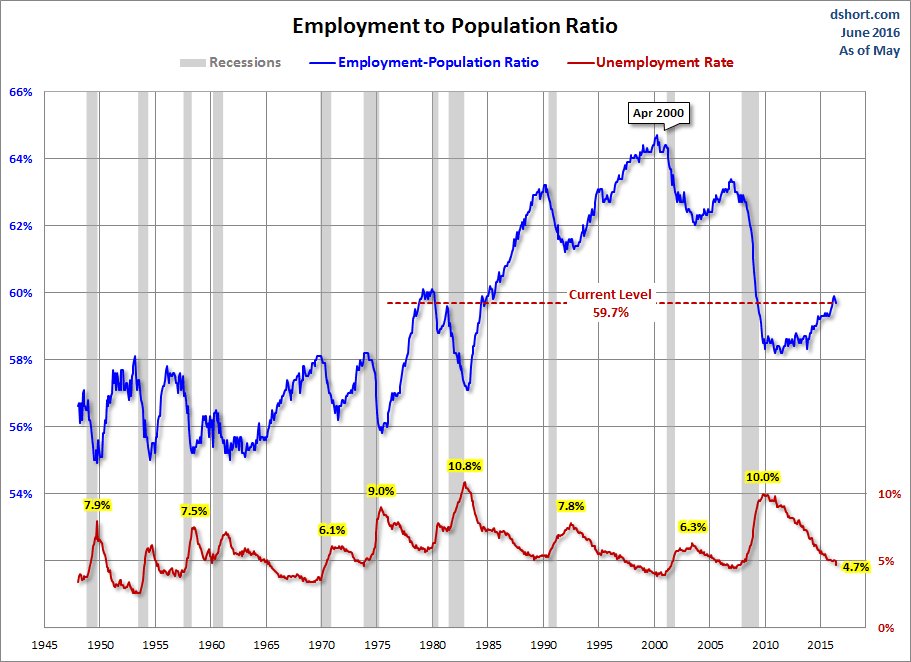
The inverse correlation between the two series is obvious. We can also see the accelerating growth of women in the workforce and two-income households in the early 1980s. Following the end of the last recession, the employment population has been range bound between 58.2% and 59.9% — the lower end of which that harkens back to the 58.1% ratio of March 1953, when Eisenhower was president of a country of one-income households, the Korean War was still underway, and rumors were circulating that soft drinks would soon be sold in cans.
The latest ratio of 59.7% is slightly below its post-recession high.
For a confirming view of the secular change the US is experiencing on the employment front, the next chart illustrates the labor force participation rate. We're at 62.6%, down 0.2% from last month.
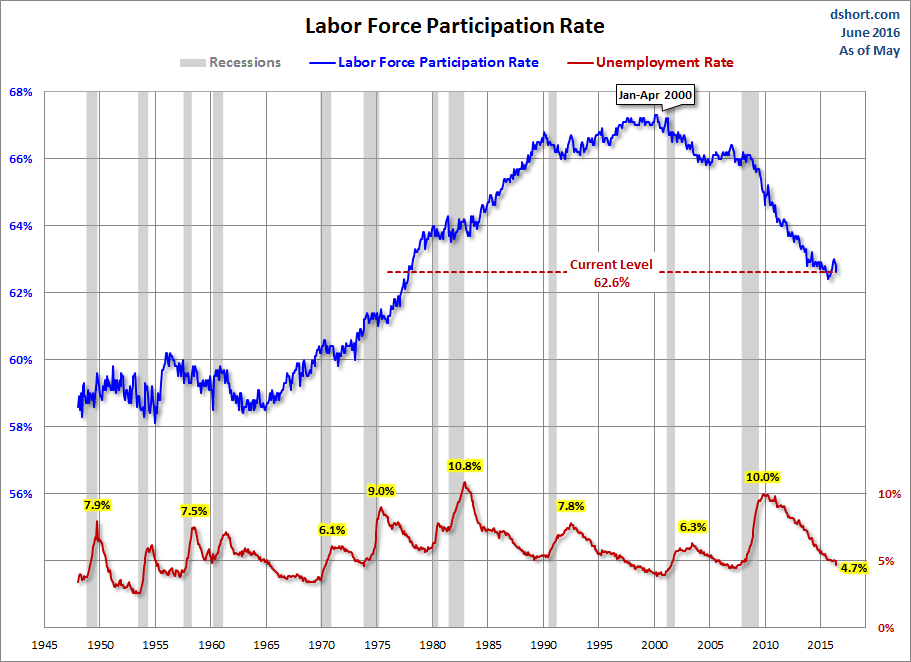
The employment-population ratio and participation rate will be interesting to watch going forward. The first wave of Boomers will continue to be a downward force on this ratio. The oldest of them were eligible for early retirement when the Great Recession began, and the transition of the Boomer cohort to full retirement age won't end until 2030.
What is the average length of unemployment? As the next chart illustrates, we are perhaps seeing a paradigm shift — the result of global outsourcing and efficiencies of technology. The post-recession duration of unemployment remains high at 26.7 weeks, although that's well off the 40.7-week all-time high in late 2011.

The Bureau of Labor Statistics' broadest measure of unemployment is the U6 series, which includes the total unemployed, plus all marginally attached workers plus total employed part time for economic reasons. This series dates from 1994.

The U6 series continues to show improvement and is now at its post-recession low. However, it remains above its 9.1% average between the last two recessions.
